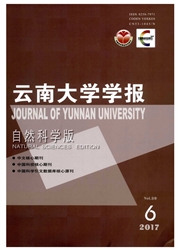

 中文摘要:
中文摘要:
以Bi(NO_3)_3·5H_2O和Na_2WO_4·2H_2O为原料,利用不同模板剂为模板,采用低温水热法制备出钨酸铋粉体,并采用了X射线衍射(XRD),扫描电镜(SEM)和紫外-可见漫反射等技术手段,对产物的晶相和微观形貌等进行了分析和表征.以甲基紫和罗丹明B 2种有机染料为目标污染物,考察了催化剂的光催化性能,并研究了陈化时间、陈化温度、p H和模板剂用量等因素对产物晶相,形貌和光催化活性的影响.结果表明,在强酸性条件下,以十六烷基三甲基溴化铵(CTAB)为模板,90℃陈化72 h制备得到的Bi2WO6具有最高的光催化活性.
 英文摘要:
英文摘要:
Bi2WO6 powders were successfully synthesized using Bi ( NO3 ) 3·5H2O and Na2WO4·2H2O as starting materials through low-temperature hydrothermal processes.The crystalline phases, microstructures and optical properties of the samples were characterized by using physicochemical techniques such as X-ray diffraction (XRD) ,scanning electron microscopy (SEM) and UV-vis diffuse reflectance spectroscopy (DRS).The photo- catalytic activities of the obtained Bi2WO6 powders were also evaluated through photocatalytic degradation of methyl violet (MV) and rhodamine B (RhB) in solution under simulated sunlight illumination.The effects of aging time, reaction temperatures, pH and using of different templates on crystalline phases and photocatalytic activities of the samples were investigated.The results show that Bi2WO6 obtained by using cetyhrimethyl ammonium bromide (CTAB) as template through a 72 h aging at 90℃ exhibited the highest efficiency for degradation of organic dyes.
 同期刊论文项目
同期刊论文项目
 同项目期刊论文
同项目期刊论文
 期刊信息
期刊信息
